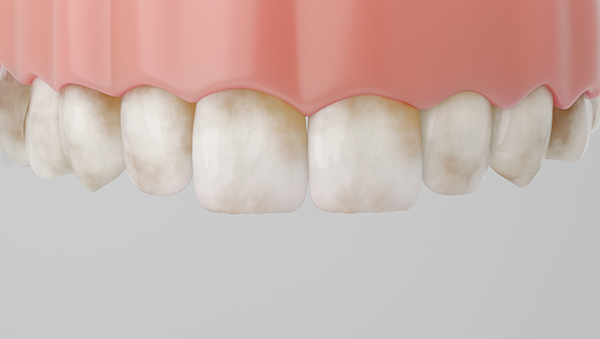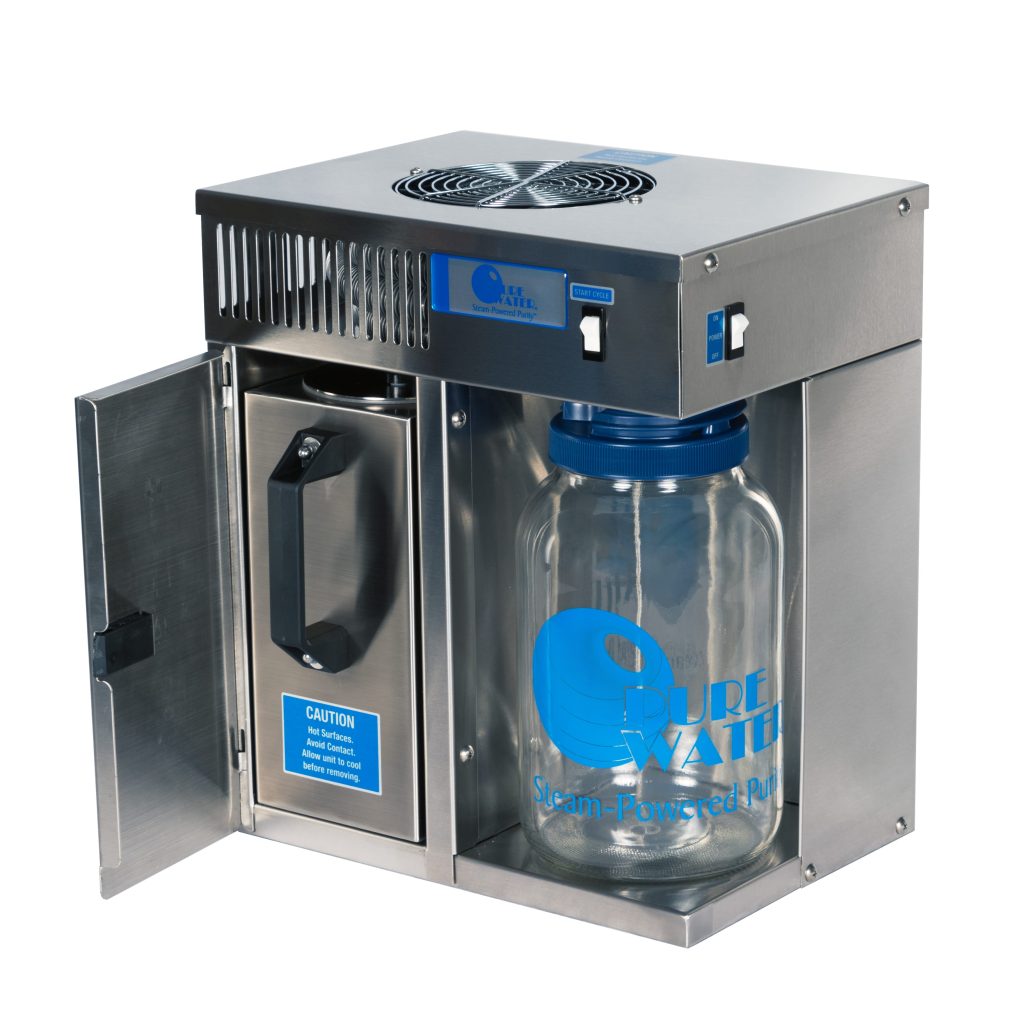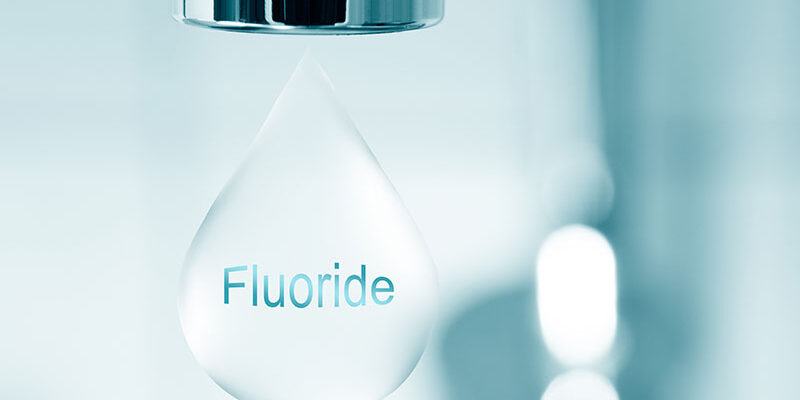Why Is Fluoride Added to Tap Water?
Fluoride has been added to public water supplies in the United States since the 1940s as a public health measure to reduce tooth decay. This practice, known as water fluoridation, was based on research showing that people who naturally consumed water with moderate levels of fluoride had fewer cavities. The benefits of fluoride in water were widely celebrated, and by the 1960s, fluoridation became a national standard, endorsed by the American Dental Association, the CDC, and the World Health Organization.
Fluoride works by remineralizing tooth enamel and making it more resistant to acid attacks from plaque and sugars. Because it is odorless, tasteless, and cost-effective, many cities adopted fluoridation without much opposition. Today, nearly 73% of Americans on community water systems receive fluoride in drinking water, according to the CDC.
Does Fluoride Naturally Exist in Water?
Yes, fluoride naturally exists in water due to the erosion of fluoride-containing rocks and soil. Natural fluoride concentrations vary widely depending on geological conditions. In some areas, well water can contain higher levels of fluoride than what’s considered safe. This has raised concerns about the side effects of fluoride in water, especially when levels exceed recommended limits.
For reference, the U.S. Public Health Service recommends a fluoride concentration of 0.7 milligrams per liter (mg/L) in tap water. This level is considered effective for preventing cavities while minimizing risks of dental fluorosis, a condition that causes discoloration or pitting in the tooth enamel.
Why Is Fluoride Controversial?
Despite decades of endorsements, fluoride in water is controversial for several reasons. Critics argue that mass fluoridation is a form of forced medication, stripping individuals of their right to choose. Others question whether ingesting fluoride is necessary when fluoride toothpaste is already widely used.
Another concern is the potential side effects of fluoride in water. While dental fluorosis is generally cosmetic and mild, excessive fluoride intake has been linked to more serious health risks, including:
- Skeletal fluorosis, a bone disease caused by prolonged high fluoride exposure
- Potential neurodevelopmental issues, with some studies suggesting links to lower IQ in children (although this is debated and often tied to high-fluoride regions, not standard U.S. fluoridation levels)
- Thyroid disruption in sensitive individuals

Furthermore, people with kidney disease may be more susceptible to fluoride toxicity because their bodies cannot excrete it efficiently. This raises ethical concerns about vulnerable populations being disproportionately affected.
As public awareness has grown, more people are asking, “Is fluoride in water bad for you?” While most health authorities still support fluoridation, the growing skepticism has led to legal challenges and policy changes in some regions.
Which Cities Have Banned Fluoride in the USA?
Several U.S. cities and counties have chosen to reject or remove fluoride from their water supply in recent years. These decisions are often driven by public vote or local government action.
Here are a few examples:
- Portland, Oregon: One of the largest U.S. cities without fluoridated water. Voters have rejected fluoridation multiple times, most recently in 2013.
- Juneau, Alaska: Stopped adding fluoride in 2007 after public outcry.
- Watsonville, California: Delayed fluoridation for years due to legal battles and community resistance.
- College Station, Texas: Ended fluoridation in 2019, citing both cost and health concerns.
- San Marcos, Texas: Voters approved a measure to stop fluoridation in 2015.
These cities reflect a broader trend toward questioning the necessity of fluoride in drinking water. In some cases, fluoride was removed after decades of use, while in others, it was rejected from the start.
How Do I Remove Fluoride From My Water?
If you’re concerned about fluoride exposure, there are several methods available to remove fluoride from your water. Not all standard water filters remove fluoride, so it’s important to choose the right type:
- Distillation: Water distillers boil water and then condense the steam, leaving behind minerals like fluoride. Distillation removes the most amount of fluoride and is consistent in its removal at over 99.9%.
- Reverse Osmosis (RO): RO systems use a semipermeable membrane to remove up to 95% of fluoride as long as the membrane is maintained.
- Activated Alumina Filters: These are designed specifically to target fluoride and arsenic. They’re often used in whole-house systems or countertop filters. The filters must be well-maintained to remove fluoride consistently. Better results are obtained if the initial water pH and temperature are correct and competing contaminants are not interfering.
- Bone Char Carbon: A natural option that can remove fluoride, though it is less common in modern filtration systems. Better results are obtained if the initial water pH and temperature are correct and competing contaminants are not interfering.
Pitcher filters and most carbon-based faucet filters (like Brita or PUR) do not remove fluoride. Always check product specifications before purchasing a filter.
If you’re asking, “Is there fluoride in my water?”, check with your local water utility or visit the Environmental Working Group’s (EWG) Tap Water Database, which compiles water quality reports by ZIP code.
What Are Other Sources of Fluoride?
Even if you remove fluoride from your tap water, you may still be exposed to fluoride from other sources:
- Toothpaste and mouthwash: Most contain fluoride, often in concentrations of 1,000–1,500 ppm (parts per million). While not intended to be swallowed, small amounts are often ingested, especially by children.
- Processed beverages and foods: Items made with fluoridated water—like soda, juice, or canned soup—can contribute to daily fluoride intake.
- Tea: Especially black and green tea, which naturally absorb fluoride from soil.
- Pesticide residues: Certain pesticides used on produce may contain fluoride compounds.
- Some medications: Including antibiotics and anesthetics, which may use fluoride-based compounds.
This cumulative exposure has led some researchers to argue that total fluoride intake may exceed safe levels in some individuals, particularly in children or people with kidney disease.
You might also wonder, “Is there fluoride in bottled water?” The answer depends on the brand. Most bottled waters are not fluoridated, but if the source is a municipal water supply, it may contain fluoride unless specifically removed. Look for labels or check manufacturer websites for details.
Is Fluoride in Well Water?
Yes, fluoride is often found in well water, especially in regions with fluoride-rich geological formations. In some areas, well water contains naturally high levels of fluoride—sometimes exceeding the EPA’s maximum contaminant level of 4.0 mg/L, and even the secondary, cosmetic limit of 2.0 mg/L.
If you use a private well, you should test your water regularly. Most county health departments offer testing services or can recommend certified labs. High fluoride levels in well water may require treatment through reverse osmosis or distillation systems.
Does Europe Have Fluoride in Water?
Most European countries do not fluoridate their public water supplies. Instead, they focus on alternative public health strategies such as encouraging fluoride toothpaste use and improving dental care access.
Here’s a look at some European fluoride policies:
- Germany, Sweden, Denmark, and the Netherlands have all stopped or rejected water fluoridation.
- The UK has fluoridation in some regions (e.g., Birmingham), but it’s not widespread.
- France and Belgium do not fluoridate water, instead relying on topical fluoride treatments.
Opponents of fluoridation often point to Europe as an example of successful dental health outcomes without the need to add fluoride to water. This has added fuel to the fluoride in water controversy in the United States and Canada.
Should I Remove Fluoride from My Drinking Water?
The debate over fluoride in water is far from settled. On one side, public health organizations continue to emphasize the benefits of fluoride in water for reducing cavities. On the other hand, critics question whether mass fluoridation is necessary or even ethical in today’s world, where fluoride toothpaste and dental care are widely available.
For individuals asking, “Is fluoride in water bad for you?”, the answer is: it depends. The answer may vary based on age, health status, total fluoride exposure, and personal preference. While low levels (around 0.7 mg/L) are considered safe by the U.S. government, many still choose to remove fluoride from their drinking water as a precaution.
If you’re concerned, you can test your water, switch to fluoride-free bottled water, or invest in a fluoride in water removal system such as a water distiller. You can also limit fluoride exposure from toothpaste, food, and tea if needed.
Fluoride is just one of many chemicals found in modern tap water. Whether you’re wondering if there is fluoride in your water, or trying to make an informed choice for your family, understanding all sources of fluoride—and the full scope of the fluoride in water controversy—is the first step to deciding what’s right for you.








